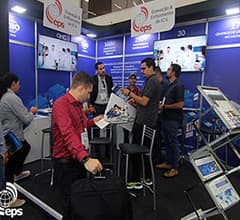Home > News & Blog > Can you reset the lifetime of a semiconductor?
Can you reset the lifetime of a semiconductor? Component Baking is the Answer
Humidity is undoubtedly one of the biggest adversaries for semiconductors. Semiconductors are made up of elements such as silicon or germanium, which are extremely hygroscopic, meaning they absorb moisture from the air easily. Each semiconductor will have a Moisture sensitivity level (MSL). The MSL is an electronic standard for the time period in which a moisture sensitive device can be exposed to ambient room conditions (30 °C/85% RH at Level 1; 30 °C/60% RH at all other levels). This determines the shelf life of semiconductors, meaning the time it can be left on the shelf prior to use. So bearing this in mind, can we reset the shelf life of a semiconductor?
If we take the international standards as a guideline such as the Joint Industry Standard (IPC/JEDEC J.STD.O33B), then not only is it possible but the procedures are clearly defined. Every moisture sensitive electric component can be put through the process of “industrial baking” to remove moisture and, when performed correctly can reset the exposure and shelf life. This means that all semiconductors can be resurrected for use in the assembly of electronic products.
The Joint Industry Standard Document (IPC/JEDEC J.STD.O33B) specifies the requirements and procedures to be considered for component baking, such as:
- MSL of the component.
- Previous exposure time, if available.
- Thickness of the encapsulation.
- Industrial oven temperature.
- Specification of the oven with respect to humidity.
- Plastic, paper and labels.
- ESD.
- Oxidation risk.
To effectively bake components to reset their shelf life, saving time and money on your assembly line, it is important to have a solid understanding of the relationship between baking hours, baking temperature, component encapsulation thickness, as well as all of the auxiliary processes and characteristics that directly influence the component. Incorrectly baking components could permanently damage them, or in the worst case scenario, generate a latent failure that would not be identifiable prior to operating the product.
To find out more about how our experts can properly and efficiently carry out component baking, get in touch with one of our team today.








